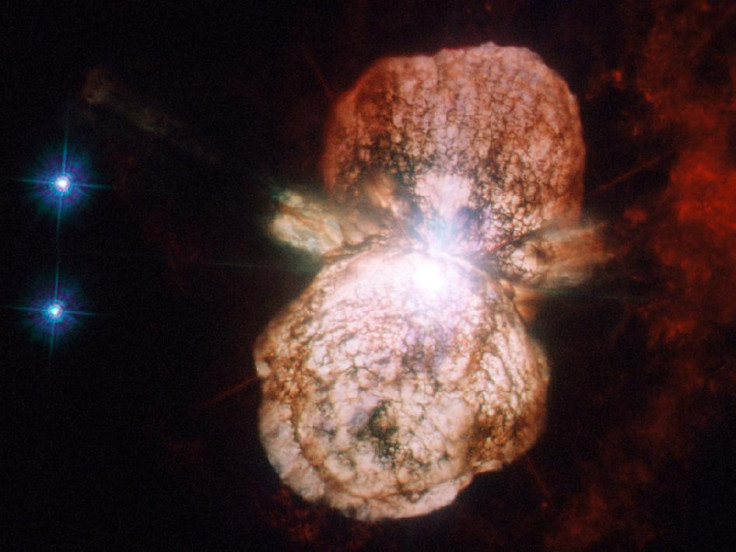Eta Carinae: 3D model reveals hidden features of death stars

Hidden features of Eta Carinae, a massive stellar system 7,500 light years away, have been unveiled by Nasa with new 3D models of the death stars.
Eta Carinae is made up of two massive stars – 100 times bigger than our Sun – and they are set to explode into a huge supernova that could (but probably won't) wipe out all life on Earth.
A new long-term study by astronomers at Nasa's Goddard Space Flight Centre has produced the "most comprehensive" picture of Eta Carinae.
Astrophysicist Ted Gull said: "We are coming to understand the present state and complex environment of this remarkable object, but we have a long way to go to explain Eta Carinae's past eruptions or to predict its future behaviour."
Astronomers have now found out that the brighter, cooler primary star is about five million times brighter than our Sun, with a mass about 90 times the size. The smaller one is about 30 times the mass of the sun and emits a million times its light.
The orbits of the two stars bring them close to one another every 5.5 years. At their closest approach, they are 140 million miles apart – about the same distance as Mars and the Sun. During this time, the system is a hotbed of activity.
Experts have spent the last 11 years studying these events and have developed a model based on routine observations. "The winds from each star have markedly different properties: thick and slow for the primary, lean and fast for the hotter companion," Nasa said.
"The primary's wind blows at nearly one million mph and is especially dense, carrying away the equivalent mass of our sun every thousand years. By contrast, the companion's wind carries off about 100 times less material than the primary's, but it races outward as much as six times faster."
Findings show that when the smaller star swings around the larger one, its faster winds create a spiral cavity in the outflow of the larger star. When the winds come into contact with one another, X-rays are produced and structural changes take place.
Experts are now using their data to make new predictions that can be tested at the next close encounter in February 2020.
"Both of the massive stars of Eta Carinae may one day end their lives in supernova explosions," Nasa said. "For stars, mass is destiny, and what will determine their ultimate fate is how much matter they can lose – through stellar winds or as-yet-inexplicable eruptions – before they run out of fuel and collapse under their own weight.
"[But] for now, the researchers say, there is no evidence to suggest an imminent demise of either star."
© Copyright IBTimes 2025. All rights reserved.






















